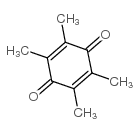Genome-wide transcriptome profiling of region-specific vulnerability to oxidative stress in the hippocampus.
Xinkun Wang, Ranu Pal, Xue-wen Chen, Keshava N Kumar, Ok-Jin Kim, Elias K Michaelis
Index: Genomics 90(2) , 201-12, (2007)
Full Text: HTML
Abstract
Neurons in the hippocampal CA1 region are particularly sensitive to oxidative stress (OS), whereas those in CA3 are resistant. To uncover mechanisms for selective CA1 vulnerability to OS, we treated organotypic hippocampal slices with duroquinone and compared transcriptional profiles of CA1 vs CA3 cells at various intervals. Gene Ontology and Biological Pathway analyses of differentially expressed genes showed that at all time points, CA1 had higher transcriptional activity for stress/inflammatory response, transition metal transport, ferroxidase, and presynaptic signaling activity, while CA3 had higher GABA-signaling, postsynaptic, and calcium and potassium channel activity. Real-time PCR and immunoblots confirmed the transcriptome data and the induction of OS by duroquinone in both hippocampal regions. Our functional genomics approach has identified in CA1 cells molecular pathways as well as unique genes, such as guanosine deaminase, lipocalin 2, synaptotagmin 4, and latrophilin 2, whose time-dependent induction following the initiation of OS may represent attempts at neurite outgrowth, synaptic recovery, and resistance against OS.
Related Compounds
| Structure | Name/CAS No. | Molecular Formula | Articles |
|---|---|---|---|
 |
DUROQUINONE
CAS:527-17-3 |
C10H12O2 |
|
Quinone-induced protein handling changes: implications for m...
2014-10-15 [Toxicol. Appl. Pharmacol. 280(2) , 285-95, (2014)] |
|
Method development in quantitative NMR towards metrologicall...
2015-04-01 [Anal. Bioanal. Chem 407 , 3115-3123, (2015)] |
|
Using high-performance ¹H NMR (HP-qNMR®) for the certificati...
2014-05-01 [J. Pharm. Biomed. Anal. 93 , 102-110, (2014)] |
|
Effect of chronic hyperoxic exposure on duroquinone reductio...
2005-11-01 [Am. J. Physiol. Lung Cell. Mol. Physiol. 289(5) , L788-97, (2005)] |
|
Duroquinone reduction during passage through the pulmonary c...
2003-11-01 [Am. J. Physiol. Lung Cell. Mol. Physiol. 285(5) , L1116-31, (2003)] |